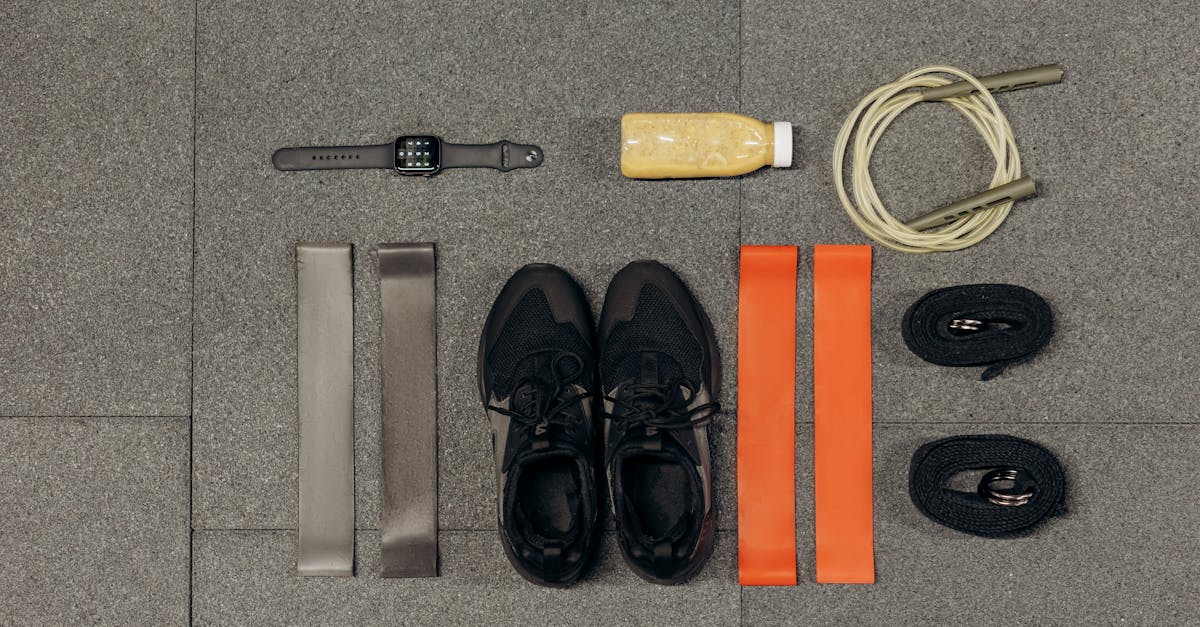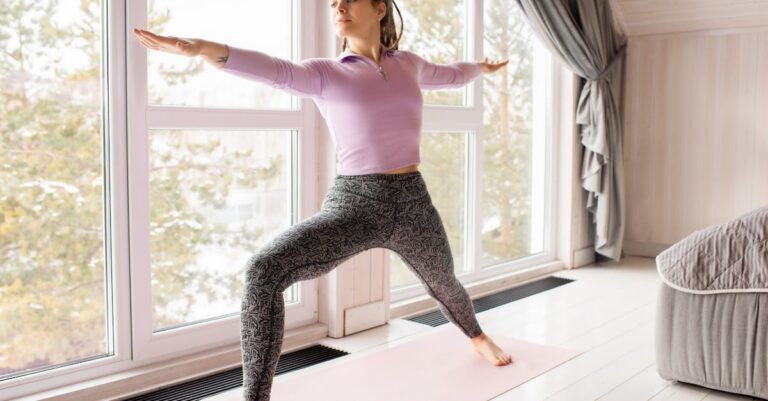So, you’ve decided to conquer your fitness journey right from your living room? Awesome! Working out at home is super convenient, but let’s be real – sometimes it’s tough to stay motivated without a plan. You might feel a bit lost, wondering if you’re actually making progress or just spinning your wheels (sometimes literally, if you have a bike!). You want results, whether that’s feeling stronger, having more energy, or just sticking to a routine. This article is your friendly guide to figuring out *how* to set fitness goals that actually work for home workouts. We’ll walk through simple steps to create goals that keep you excited and on track, so you can finally see those changes you’re aiming for. Ready to ditch the guesswork?
Why Even Bother Setting Goals?
Okay, first things first. Why can’t you just, you know, *do* some exercises whenever you feel like it? Well, you could, but having goals is like having a map for a road trip. Without a destination (your goal), you might just drive around aimlessly. Goals give you direction. They tell you what you’re working towards. Think about it: saying “I want to get stronger” is kinda vague, right? But saying “I want to be able to do 10 push-ups without stopping” gives you something clear to aim for.
Goals also crank up your motivation. On days when you’d rather binge-watch that new show, remembering your goal – maybe it’s running a 5k or just feeling less winded playing with your kids – can give you that little nudge you need. Plus, reaching smaller goals along the way feels amazing! It shows you you’re making progress, which makes you want to keep going. It turns “Ugh, exercise” into “Yes! I’m getting closer!”
Get Real: Know Where You’re Starting
Before you dream about doing one-armed pull-ups, you gotta know where you stand right now. Be honest with yourself! What’s your current fitness level? If you haven’t worked out in ages, your starting goals will look way different than someone who’s been active for years. That’s totally okay! It’s not a competition.
Think about practical stuff too. How much time can you realistically commit each week? Don’t say “every day” if you know life gets crazy. Maybe it’s 20 minutes, three times a week. Perfect! What about space and equipment? You don’t need a fancy home gym. Bodyweight exercises are fantastic! But if your goal is heavy lifting, you need to figure out how you’ll access weights. Knowing your starting point – your fitness, time, and resources – helps you set goals that are actually doable, not just wishful thinking.
Imagine someone, let’s call him Alex. Alex hasn’t run since high school but suddenly decides his goal is to run a marathon next month. That’s probably not realistic, right? He’d be better off starting with a goal like, “Jog for 10 minutes without stopping, three times this week.” See the difference? Start where you are.
Make Your Goals SMART (Not Just Wishy-Washy)
Okay, let’s get down to the nitty-gritty. Ever heard of SMART goals? It’s a super handy way to make sure your goals are clear and set you up for success. It stands for:
- Specific: What exactly do you want to achieve? Instead of “get fit,” try “be able to hold a plank for 60 seconds.” Way more specific!
- Measurable: How will you know when you’ve reached it? You need numbers! “Do 15 squats” is measurable. “Do more squats” isn’t. You need to be able to track it.
- Achievable: Is this goal realistic for you right now? (Remember our friend Alex and the marathon?) Challenge yourself, sure, but don’t set yourself up for failure. If you can currently do 5 push-ups, aiming for 8 next week is achievable. Aiming for 50? Maybe not yet.
- Relevant: Does this goal actually matter to you? Does it align with what you want overall? If your main aim is stress relief, maybe a goal focused on doing yoga three times a week is more relevant than trying to lift the heaviest weight possible. Make sure it fits your ‘why’.
- Time-bound: When do you want to achieve this by? Give yourself a deadline! “I want to do 10 push-ups by the end of this month.” This creates a sense of urgency and makes it easier to plan.
Setting SMART goals transforms vague wishes like “I wanna exercise more” into actionable steps like “I will do a 20-minute home workout video (Specific, Achievable, Relevant) three times (Measurable) this week (Time-bound).” Bam! That’s a goal you can actually tackle.
Think Small to Win Big: Break It Down
Sometimes, big fitness goals can feel totally overwhelming. Like, “lose 30 pounds” or “run a half-marathon.” Staring up at that mountain can make you want to crawl back into bed. The secret? Break it down into smaller, bite-sized pieces – mini-goals!
Let’s say your big goal is to hold a 2-minute plank. Whoa! Instead of just focusing on that, set weekly goals.
Week 1: Hold a plank for 30 seconds, 3 times.
Week 2: Hold a plank for 45 seconds, 3 times.
Week 3: Hold a plank for 60 seconds, 3 times.
And so on! Each little win builds confidence and keeps you moving forward. It’s like climbing stairs instead of trying to leap to the top floor in one go. Celebrate those small victories – they add up faster than you think!
This works for anything. Want to work out more consistently? Maybe your big goal is 5 times a week. Start with a mini-goal of 2 times a week for the first two weeks, then bump it up to 3. Small steps make the journey feel less daunting and way more manageable.
What Kind of Goal? Performance vs. Habit
Did you know there are different *types* of goals? Two big ones are performance goals and habit goals (sometimes called process goals). Understanding the difference can help you choose what works best for you right now.
Performance goals are about hitting specific results or numbers. Think:
- Do 20 burpees in a row.
- Lift a certain amount of weight.
- Run a mile in under 10 minutes.
These are great for tracking tangible improvements in your fitness.
Habit goals are focused on sticking to the process – just showing up and doing the work. Think:
- Work out for 30 minutes, 3 times this week.
- Go for a walk every morning.
- Do 10 minutes of stretching before bed.
These are awesome for building consistency, especially when you’re starting out or getting back into things.
Which is better? Neither! They both have their place. Sometimes focusing just on performance can be stressful if you’re not hitting the numbers. Focusing on the habit ensures you’re building the routine, which often leads to performance improvements naturally. Maybe start with habit goals to build consistency, then add some performance goals once you’ve got a solid routine going. Mix and match!
Write It Down, Track It Down!
Okay, you’ve got your awesome, SMART goals. Now what? Don’t just keep them in your head! Write them down somewhere you’ll see them. Stick ’em on your fridge, write them in a journal, put them in a note on your phone, use a habit tracker app – whatever works for you.
Seeing your goals written down makes them feel more real and official. It’s a commitment you’ve made to yourself. And just as important: track your progress! When you complete a workout towards your habit goal, tick it off! When you manage 1 more push-up towards your performance goal, jot it down! Seeing how far you’ve come is incredibly motivating. It proves you’re making progress, even on days when you don’t *feel* like you are. It’s like getting gold stars in school – it just feels good and makes you want to earn more!
Roll With the Punches: Be Ready to Adjust
Life happens, right? You might get sick, have a super busy week at work, go on vacation, or just have a day where you feel totally drained. Does that mean your goals go out the window and you’ve failed? Absolutely not!
Fitness is a long game, not a perfect sprint. It’s totally okay – actually, it’s smart – to adjust your goals when needed. If you planned to work out 4 times this week but you caught a cold, maybe adjust the goal to just doing some light stretching twice. If a specific performance goal starts feeling way too easy or way too hard, tweak it!
Let’s revisit our fictional friend Sarah. She set a SMART goal to do three 30-minute HIIT workouts per week. But after two weeks, she realized she dreaded them and was skipping sessions. Instead of giving up, she adjusted. Her new goal became: “Do two 20-minute strength workouts and one fun dance workout video each week.” She still had a clear, measurable goal, but it was one she felt more excited about and could stick to. Flexibility is key. It’s better to adjust your sails than to abandon the ship altogether.
Alright, let’s wrap this up! Setting fitness goals for your home workouts doesn’t have to be complicated. Remember the key steps: figure out why you’re setting goals and be honest about your starting point. Then, make those goals SMART – Specific, Measurable, Achievable, Relevant, and Time-bound – so they’re crystal clear. Break down big ambitions into smaller, less scary mini-goals, and decide if you’re focusing on hitting numbers (performance) or building consistency (habit). Don’t forget to write ’em down and track your awesome progress! And most importantly, be kind to yourself and ready to adjust your goals when life throws you a curveball. It’s your journey, and having clear goals is just like having a friendly GPS guiding you towards feeling stronger, healthier, and happier, right from home.










